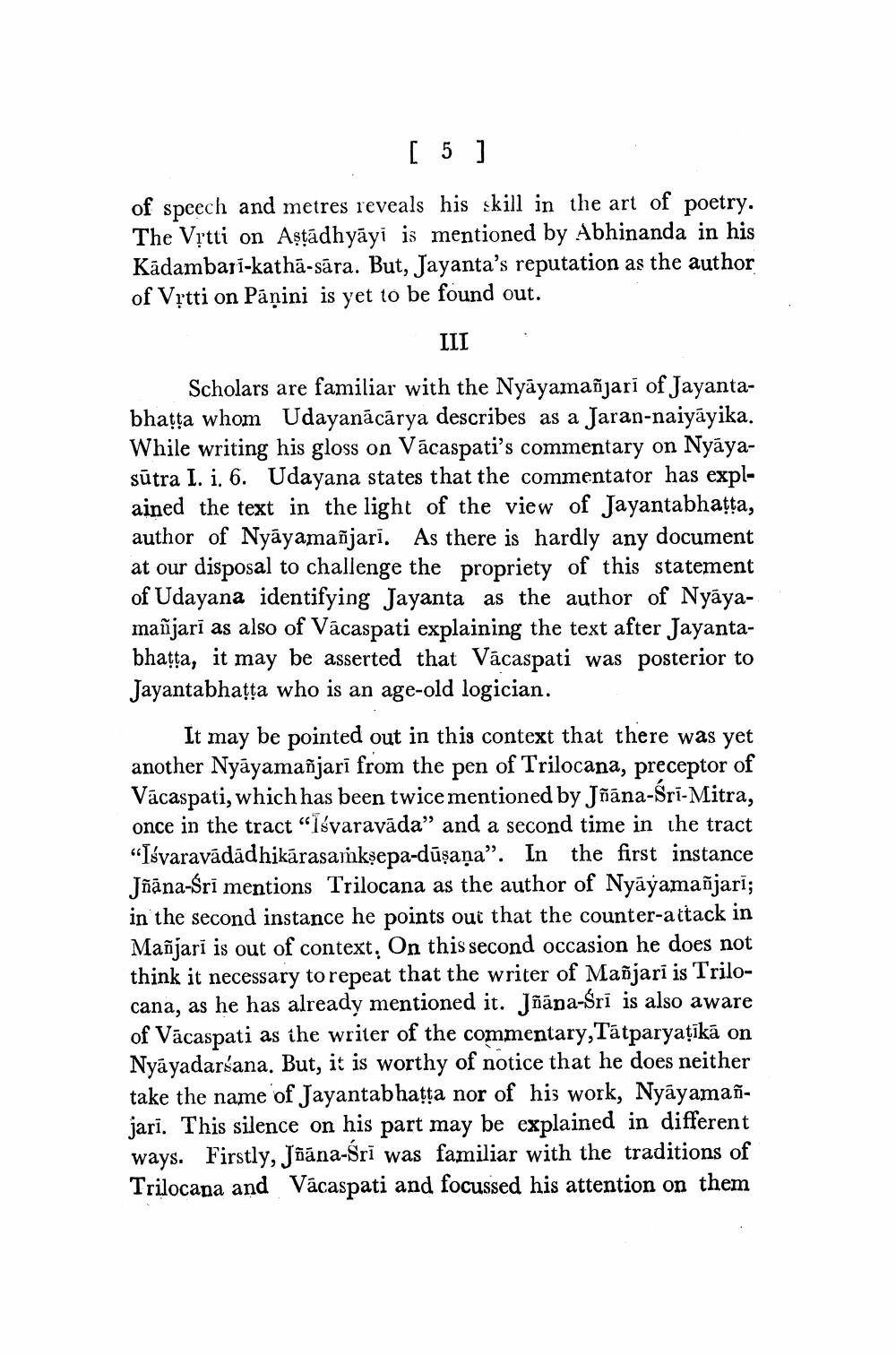________________
[ 5
]
of speech and metres reveals his skill in the art of poetry. The Vitti on Așțādhyāyi is mentioned by Abhinanda in his Kādambaji-kathā-sāra. But, Jayanta's reputation as the author of Vịtti on Pāṇini is yet to be found out.
LII
Scholars are familiar with the Nyāyamañjari of Jayantabhatta whom Udayanācārya describes as a Jaran-naiyāyika. While writing his gloss on Vácaspati's commentary on Nyāyasūtra I. i. 6. Udayana states that the commentator has explained the text in the light of the view of Jayantabhatta, author of Nyāyamañjari. As there is hardly any document at our disposal to challenge the propriety of this statement of Udayana identifying Jayanta as the author of Nyāyamañjari as also of Vācaspati explaining the text after Jayantabhasta, it may be asserted that Vācaspati was posterior to Jayantabhaťța who is an age-old logician.
It may be pointed out in this context that there was yet another Nyāyamañjarī from the pen of Trilocana, preceptor of Vācaspati, which has been twice mentioned by Jõāna-Sri-Mitra, once in the tract "lśvaravāda” and a second time in the tract "Isvaravādādhikarasamkṣepa-dūşaņa”. In the first instance Jõāna-Śrī mentions Trilocana as the author of Nyāyamañjarī; in the second instance he points out that the counter-attack in Mañjari is out of context. On this second occasion he does not think it necessary to repeat that the writer of Mañjari is Trilocana, as he has already mentioned it. Jõāna-Śrī is also aware of Vācaspati as the writer of the commentary,Tātparyaţikā on Nyāyadarśana. But, it is worthy of notice that he does neither take the name of Jayantabhatta nor of his work, Nyāyamañjari. This silence on his part may be explained in different ways. Firstly, Jñana-Śrī was familiar with the traditions of Trilocana and Vacaspati and focussed his attention on them




